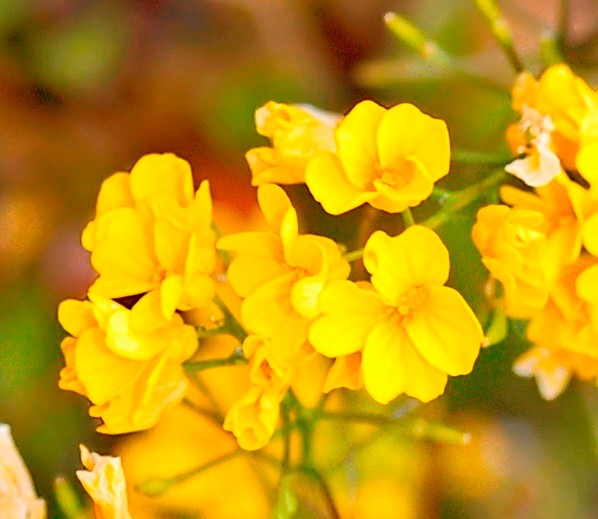Mustards
(Brassica rupestris)

Description
Brassica is a genus of plants in the cabbage and mustard family (Brassicaceae). The members of the genus are informally known as cruciferous vegetables, cabbages, or mustard plants. Crops from this genus are sometimes called cole crops—derived from the Latin caulis, denoting the stem or stalk of a plant. The genus Brassica is known for its important agricultural and horticultural crops and also includes a number of weeds, both of wild taxa and escapees from cultivation. Brassica species and varieties commonly used for food include bok choy, broccoli, cauliflower, cabbage, choy sum, kohlrabi, napa cabbage, rutabaga, turnip and some seeds used in the production of canola oil and the condiment mustard. Over 30 wild species and hybrids are in cultivation, plus numerous cultivars and hybrids of cultivated origin. Most are seasonal plants (annuals or biennials), but some are small shrubs. Brassica plants have been the subject of much scientific interest for their agricultural importance. Six particular species (B. carinata, B. juncea, B. oleracea, B. napus, B. nigra, and B. rapa) evolved by the combining of chromosomes from three earlier species, as described by the triangle of U theory. The genus is native to Western Europe, the Mediterranean and temperate regions of Asia. Many wild species grow as weeds, especially in North America, South America, and Australia. A dislike for cabbage or broccoli can result from the fact that these plants contain a compound similar to phenylthiocarbamide (PTC), which is either bitter or tasteless to people depending on their taste buds. The flowers, seeds, stalks, and tender leaves of many species of Brassica can be eaten raw or cooked. Almost all parts of some species have been developed for food, including the root (swede, turnip), stems (kohlrabi), leaves (cabbage, collard greens, kale), flowers (cauliflower, broccoli), buds (Brussels sprouts, cabbage), and seeds (many, including mustard seed, and oil-producing rapeseed). Some forms with white or purple foliage or flowerheads are also sometimes grown for ornament. Brassica species are sometimes used as food plants by the larvae of a number of Lepidoptera species—see List of Lepidoptera that feed on Brassica.
Taxonomic tree:







